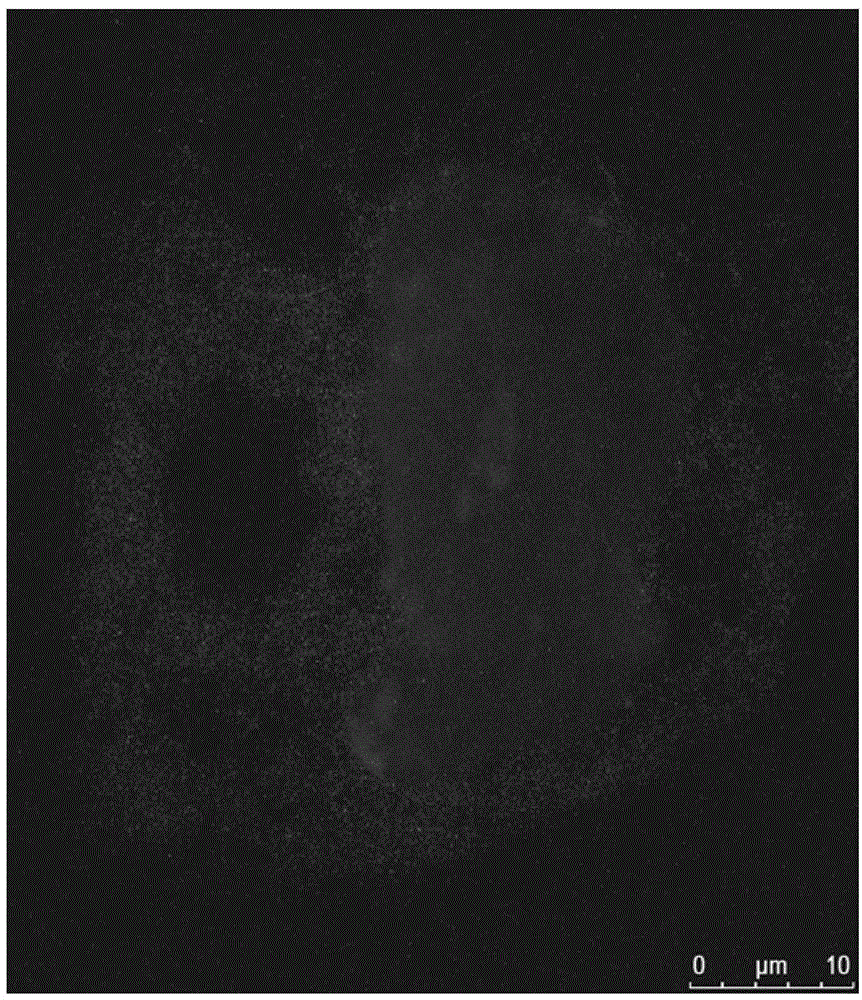Method and kit for detecting biological activity of apolipoprotein ApoA5 non-diagnostically
A technology of biological activity and kit, which is applied in the field of detection of biological activity of ApoA5, and can solve the problem of detection of less ApoA5
- Summary
- Abstract
- Description
- Claims
- Application Information
AI Technical Summary
Problems solved by technology
Method used
Image
Examples
Embodiment 1
[0043] The detection of embodiment 1 ApoA5 biological activity
[0044] Uptake of ApoA5: HL-1 cardiomyocytes were inoculated on laser confocal small dishes. After the cells were confluent, 1% serum claycomb containing 600ng / mL ApoA5 was added and incubated at 37°C for 12 hours. After the incubation, the culture supernatant of HL-1 cardiomyocytes was discarded and washed 3 times with PBS.
[0045] Fixing and punching: add 1 mL / well of 4% polyformic acid, fix the cells at room temperature for 20 minutes, and wash 3 times with PBS. Add 1 mL / well of PBS solution containing 0.5% Triton-Xl00 and incubate at room temperature for 10 minutes, then wash with PBS solution 3 times. Add 1 mL / well of PBS solution containing 5% BSA, and incubate at room temperature for 30 minutes.
[0046] Primary antibody incubation: Discard the supernatant, add ApoA5 primary antibody (1:200) diluted with 1% BSA to the test wells, and set the wells without ApoA5 primary antibody as negative control wells,...
Embodiment 2
[0050] The detection of embodiment 2ApoA5 biological activity
[0051] Uptake of ApoA5: HL-1 cardiomyocytes were inoculated on laser confocal small dishes. After the cells were confluent, 1% serum claycomb containing 1200ng / mL ApoA5 was added and incubated at 37°C for 18 hours. After the incubation, the culture supernatant of HL-1 cardiomyocytes was discarded and washed 3 times with PBS.
[0052] Fixing and punching: add 1 mL / well of 4% polyformic acid, fix the cells at room temperature for 15 minutes, and wash 3 times with PBS. Add 1 mL / well of PBS solution containing 0.5% Triton-Xl00 and incubate at room temperature for 5 minutes, then wash with PBS solution 3 times. Add 1 mL / well of PBS solution containing 5% BSA, and incubate at room temperature for 30 minutes.
[0053] Primary antibody incubation: Discard the supernatant, add ApoA5 primary antibody (1:200) diluted with 1% BSA, and set the wells without ApoA5 primary antibody as negative control wells, and incubate at 4°...
Embodiment 3
[0056] The detection of embodiment 3ApoA5 biological activity
[0057] ApoA5 uptake: HL-1 cardiomyocytes were inoculated on laser confocal small dishes. After the cells were full, 1% serum claycomb containing 3000ng / mL ApoA5 was added to culture at 37°C for 12 hours. The ApoA5 used was inactivated. Biological activity has been lost. After the incubation, the culture supernatant of HL-1 cardiomyocytes was discarded and washed 3 times with PBS.
[0058] Fixing and punching: Add 1 mL / well of 4% polyformic acid, fix the cells at room temperature for 25 minutes, and wash 3 times with PBS. Add 1 mL / well of PBS solution containing 0.5% Triton-Xl00 and incubate at room temperature for 15 minutes, then wash with PBS solution 3 times. Add 1 mL / well of PBS solution containing 5% BSA, and incubate at room temperature for 30 minutes.
[0059] Primary antibody incubation: Discard the supernatant, add ApoA5 primary antibody (1:200) diluted with 1% BSA, and incubate at 4°C for 12 hours. D...
PUM
 Login to View More
Login to View More Abstract
Description
Claims
Application Information
 Login to View More
Login to View More - R&D
- Intellectual Property
- Life Sciences
- Materials
- Tech Scout
- Unparalleled Data Quality
- Higher Quality Content
- 60% Fewer Hallucinations
Browse by: Latest US Patents, China's latest patents, Technical Efficacy Thesaurus, Application Domain, Technology Topic, Popular Technical Reports.
© 2025 PatSnap. All rights reserved.Legal|Privacy policy|Modern Slavery Act Transparency Statement|Sitemap|About US| Contact US: help@patsnap.com



